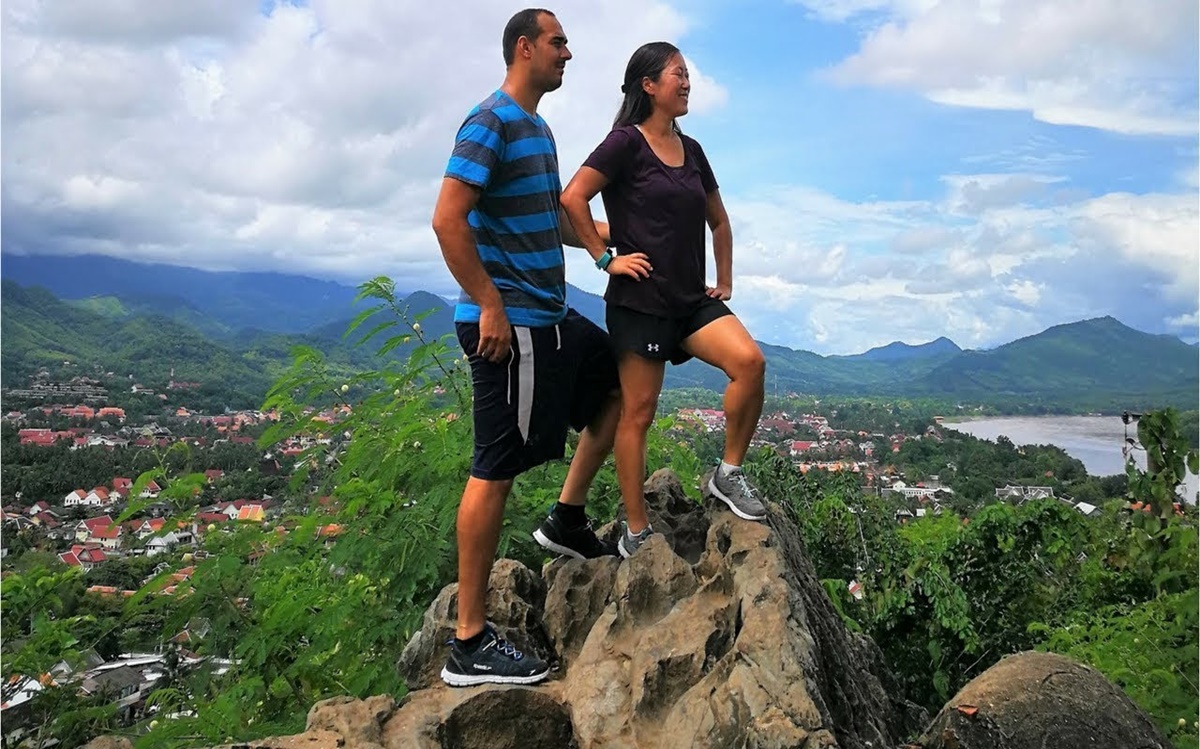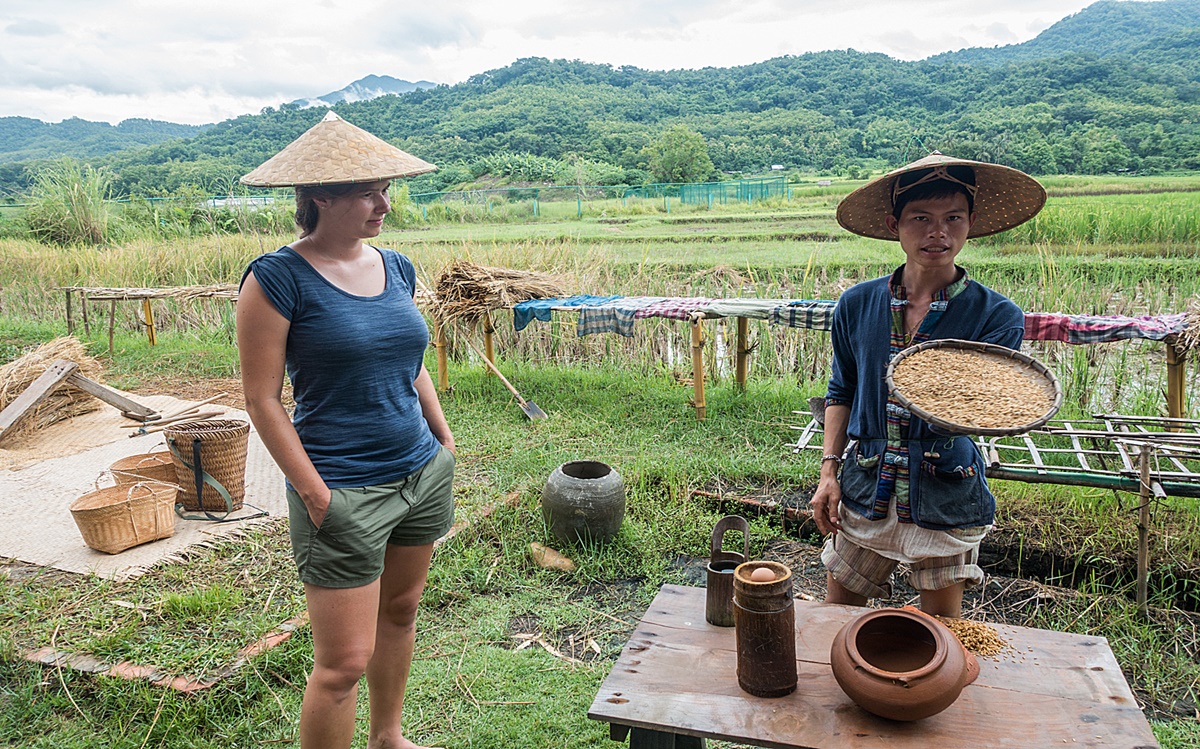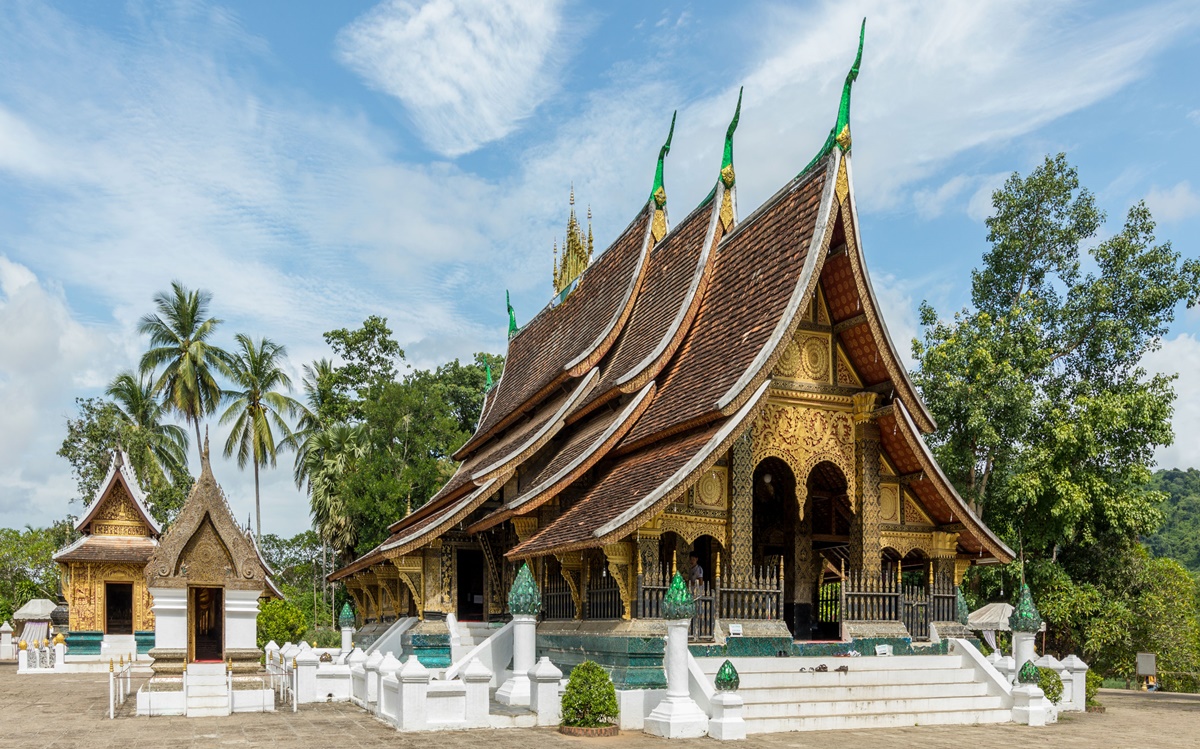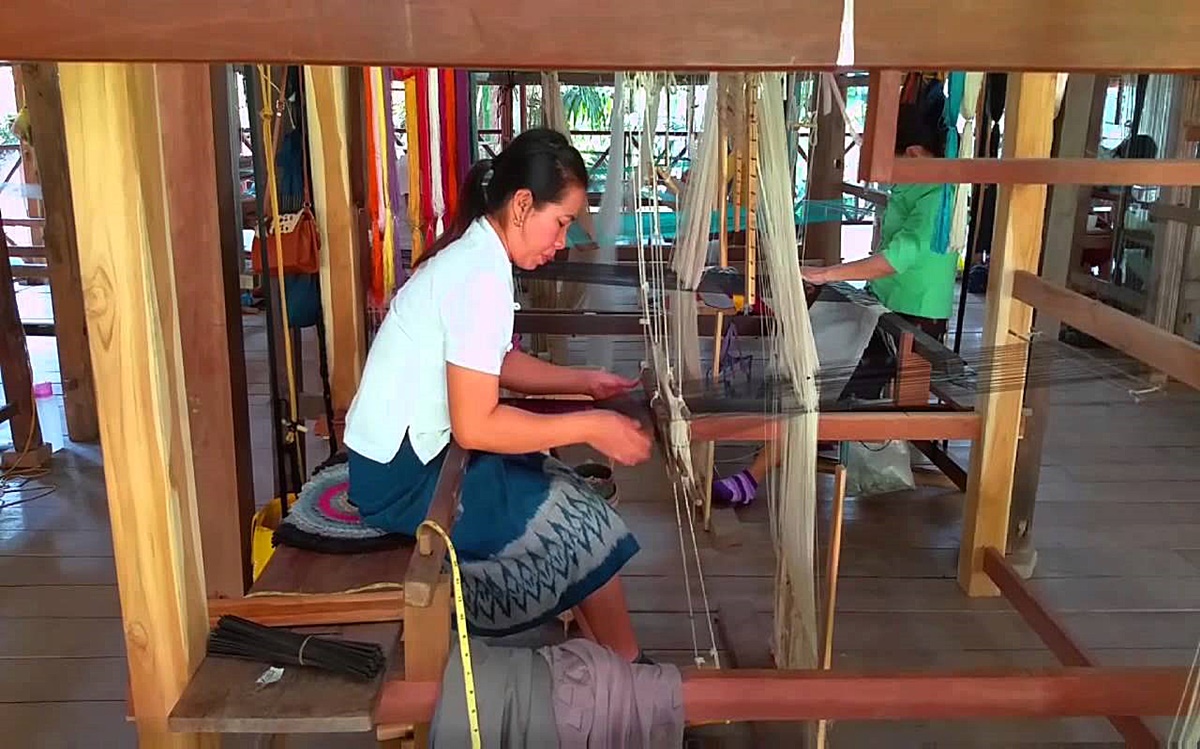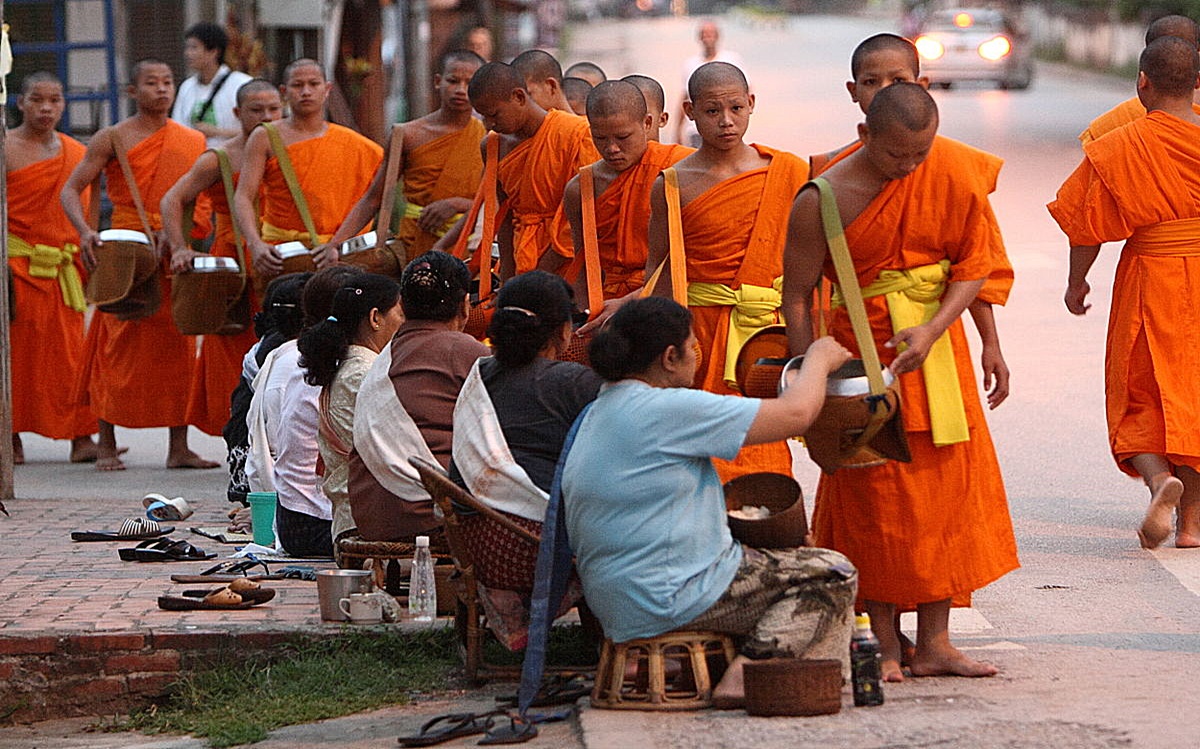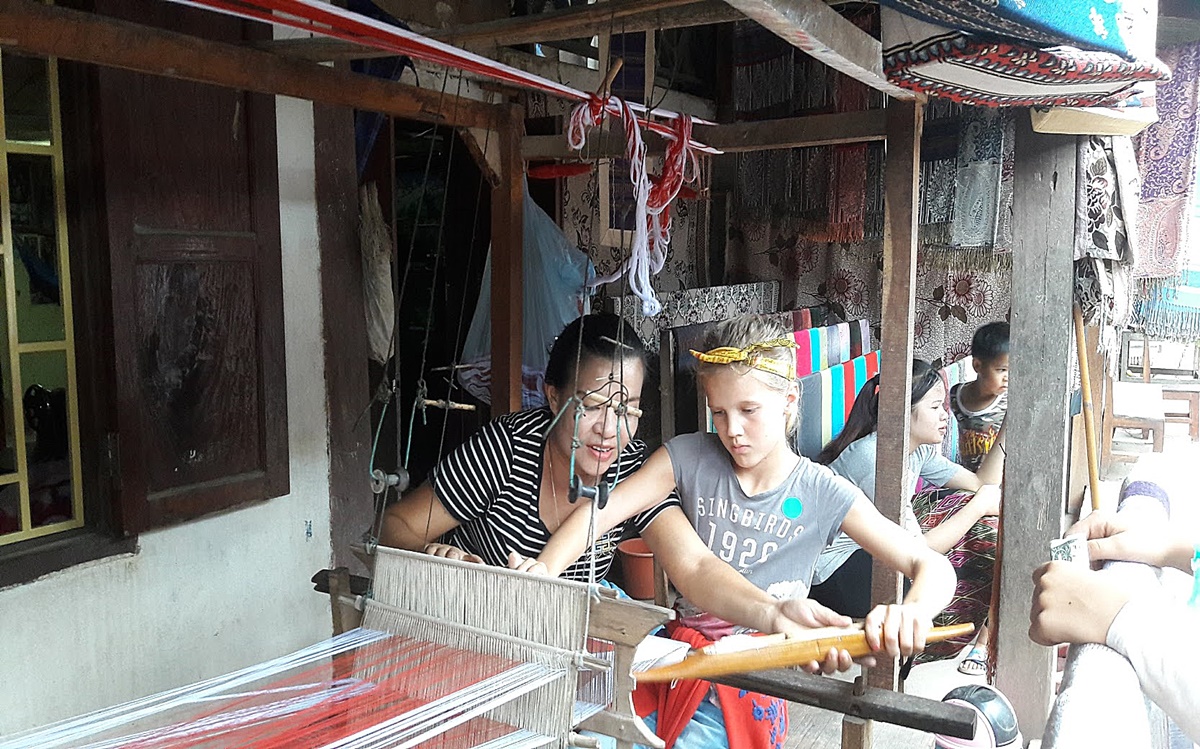Itinerary
Day 1
Consists of collecting you from the Airport/Boat/Bus station by tour guide and taking you to your chosen hotel, should you wish for GoLaos.com to add accommodation please indicate the dates you will stay in Luang Prabang and we can send you more details. During your relaxation time in the hotel the guide will give you the run-down of the tours and activities for the next few days.
Day 2
8am: After breakfast you will head to Pak Ou/Buddha cave. Pak Ou cave, this is where the Nam Ou (Ou River) and Mekong River meet at Ban Pak Ou, two famous caves in the limestone cliff are crammed with myriad Buddha images.
In the lower cave a photogenic group of Buddhas are silhouetted against the stunning backdrop. The upper cave is a five-minute climb up steps, you'll need a torch from 50m into the rock face.
After the temple cruise alongside the river bank to Ban Xang Hai (Lao Whisky making village).
Ban Xang Hai is famous for its Lao Lao (distilled rice whisky); here, you can try before you buy. A variety of handicrafts are also for sale here. Getting there, the village, 29 km north of Luang Prabang, a boat ride to Tam Ting (Pak Ou caves). Here you will walk the narrow footpath-streets behind the very attractive wat, featuring weavers' looms, colourful fabric stalls and a few stills producing the wide range of liquors sold.
On the way back to Ban Xangkhong - (Weaving Village), 2 km to the north of Luang Prabang town along the river, you can watch villagers making posa paper (from mulberry bark) and weaving traditional textiles. You’ll see this paper around town, at the markets, as the end pages for restaurant menus.
Return late evening
Day 3
This is a full day tour by waking up early at “5am”, to watch the amazing monk routine of collecting alms. Luang Prabang’s morning alms a sight of hundreds of monks lining the streets of the World Heritage Town of Luang Prabang in northern Laos to collect food from local people is truly awe-inspiring – a photo opportunity that most tourists are willing to set their alarms for. Sai Bat (morning alms) takes place between the hours of 5-6am each day and involves people placing food and personal care items into the alms bowls of passing monks. It’s a silent and sacred ceremony – one that is steeped in tradition.
Then walk to a local morning market. This small market is basically the Laotian "supermarket" where they come to buy their fresh fruit, vegetables and meat. Very active from 8 o’clock in the morning, it’s a typical passing spot for Laotians who come to buy and/or to sell. You can find many unusual foodstuffs like ox-blood which is proposed in gelatinous cubes, grilled insects (worms, grasshoppers, bee’s larvae, crickets, butterfly chrysalis), caramelized pork’s head, and all sorts of leaves and plants which are used to make the traditional dishes. Return to your hotel for breakfast.
At 9am meet with guide and driver to visit National Museum formerly known as the Royal Palace of Luang Prabang. The Royal Palace Museum in Luang Prabang also known as “Haw Kham” or "Golden Hall" was once Laos’ Royal Palace, full of many interesting historical items, with each item telling its own story, you will learn quite a bit about the Lao History and about Laos Royals.
The National Museum was Built in 1904, with architecture of the Lao traditional and French. Originally built for King Sisavang Vong and his family during the French colonial era. After the death of King Sisavang Vong, the crown Prince Savang Vatthana and his family were the last to occupy the palace.
After the revolution in 1975, the building was taken over by the government, with the palace converted into a national museum and opened to the public in 1995.
Shortly after on Xiengthong Temple. Wat Xieng Thong built 1560 referred as the "Golden City or Golden Tree Monastery" is the most historically significant and impressive of Luang Prabang's many wats.
With its low sweeping double-tiered roof and the rich interior and exterior decoration create an exceptionally fine example of the classic Luang Prabang style, plus with various chapels and other buildings make the entire monastery complex an architectural gem
Next to Living Land Farm. See the process of planting and harvesting rice in the rice paddy. Spend time at the Living Rice Farm, situated in an idyllic countryside setting, surrounded by mountains in the middle of ancient rice terraces.
The Living Land Farm is a community enterprise growing organic vegetables and rice. Working with and supporting the local community plus helping to educate children from disadvantaged families.
On the way back from water falls, you will stop at Ban Na Aun “The Hmong handy craft Village” “
You will be dropped back at your hotel approximately late evening.
Day 4
We will return you to the Airport/Boat/Bus station with the tour guide

